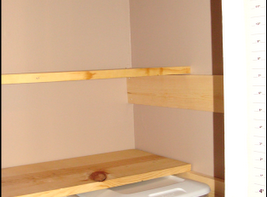Eco-Friendly DIY: Sustainable Home Improvement

Creating an eco-friendly home not only benefits the environment but also promotes a healthier and more sustainable lifestyle. With the rise of do-it-yourself (DIY) projects, you can now embark on green home improvements that are not only cost-effective but also a fun way to unleash your creativity. In this article, we will explore various eco-friendly DIY ideas and practices for sustainable home improvement.
1. Repurposing and Upcycling
One of the easiest ways to adopt an eco-friendly approach in home improvement is through repurposing and upcycling. Instead of throwing away old furniture, consider giving it a makeover or repurpose it for a different use. For example, an old ladder can be transformed into a unique bookshelf, or wooden pallets can be turned into stylish garden furniture.
2. Energy-Efficient Lighting
Switching to energy-efficient lighting options can significantly reduce your energy consumption. Replace traditional incandescent bulbs with LED or CFL bulbs, as they consume less energy and have a longer lifespan. Install dimmer switches or motion sensors to further optimize energy usage, ensuring that lights are only on when needed.
3. Sustainable Flooring
Choose sustainable flooring materials such as bamboo or cork, as they are renewable resources and have a lower environmental impact compared to traditional hardwood. These materials are durable, stylish, and an excellent alternative for a greener home. Alternatively, consider using reclaimed wood for a unique and eco-friendly flooring option.
4. Water Conservation
Reducing water consumption is crucial for a sustainable home. Install low-flow faucets, showerheads, and toilets to conserve water without compromising functionality. Harvesting rainwater is another eco-friendly practice that can be achieved by setting up a rain barrel to collect water for watering plants or cleaning purposes.
5. Natural and VOC-Free Paint
Conventional paints often contain volatile organic compounds (VOCs), which can release harmful toxins into the air. Opt for natural and low VOC paints when repainting walls or furniture. These paints are environmentally friendly and promote better indoor air quality.
6. Efficient Insulation
Proper insulation is essential for energy efficiency. Seal any gaps and cracks around windows and doors to prevent heat or cool air leakage. Adding insulation materials to walls, attics, and floors can greatly improve the energy efficiency of your home and reduce reliance on heating and cooling systems.
7. Composting
Implementing a composting system is an effective way to reduce waste and produce nutrient-rich soil for your garden. Starting a compost bin or pile allows you to convert organic kitchen scraps, yard waste, and other biodegradable materials into compost, reducing the amount of waste sent to landfills.
8. Smart Technology
Embracing smart technology can contribute to a sustainable home. Install programmable thermostats to optimize energy usage and reduce heating and cooling costs. Invest in smart home automation systems that allow you to control lighting, appliances, and HVAC systems, ensuring energy-efficient operation.
Conclusion
By implementing eco-friendly DIY practices and sustainable home improvements, you can create a greener living space while reducing your environmental footprint. Repurposing, energy-efficient lighting, sustainable flooring, water conservation, natural paint, efficient insulation, composting, and smart technology are just a few ideas to get started. Join the growing movement towards sustainable living and enjoy the benefits of an eco-friendly home.


